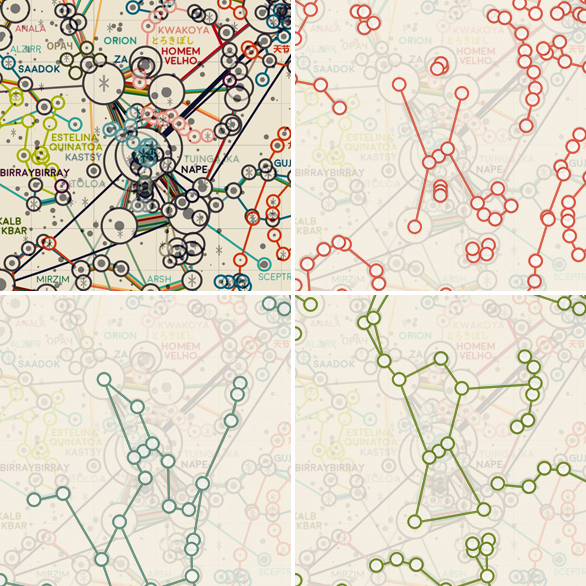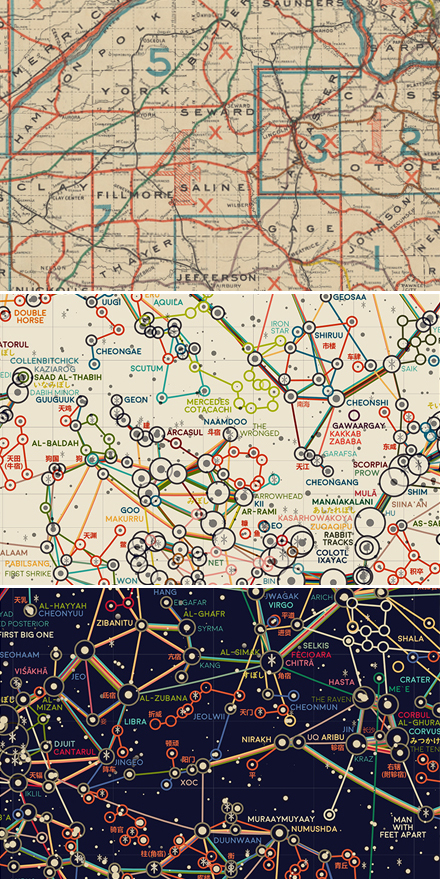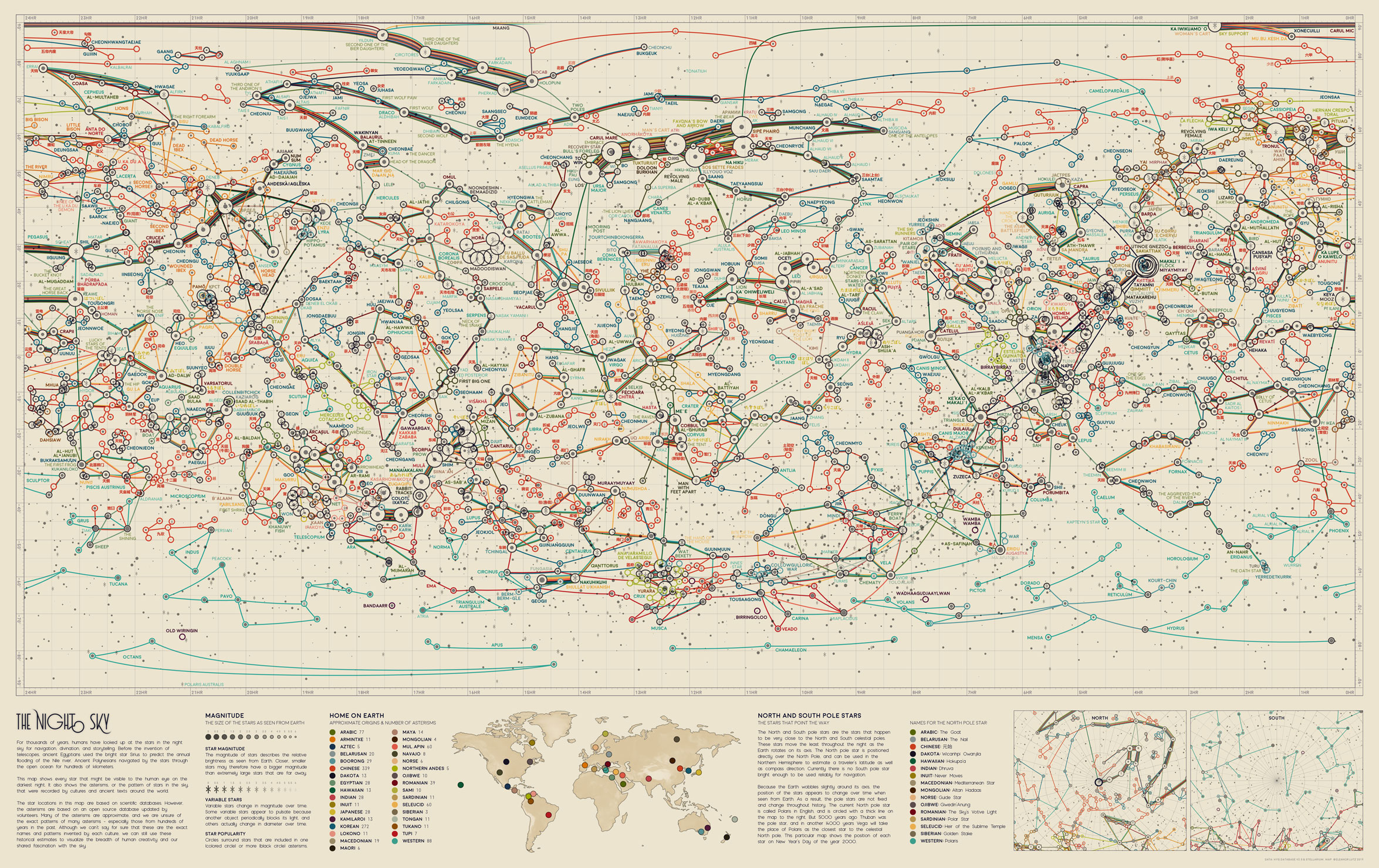Constellations from Around the World
July 29 2019 · Link to the Open-Source Code
Two weeks ago I shared a map of all the stars you can see from Earth, alongside the Western constellations. But the Western constellations are only one of many patterns of stars invented by cultures around the world. This week’s map illustrates the animals, people, and objects imagined in the sky by more than 30 different civilizations.
To make this map I used data from Stellarium, an open-source planetarium software that includes constellations from ancient Dakota, Hawaiian, and Mongolian cultures, among many others. Some of my favorite constellations were the Stars of Water, Rabbit Tracks, and the Hippopotamus, and I also really liked the star names The Oath Star, Lady of Life, and The Hand of the Mouse.

 The stars around the Western constellation Orion are one of the busiest places on the map. Some of the individual cultures are highlighted here, including the Chinese constellations in red, ancient Egyptian in turquoise, and Arabic in green. I really liked that each of these cultures included the triple stars in “Orion’s belt”, but still interpreted the star patterns in a completely different design.
The stars around the Western constellation Orion are one of the busiest places on the map. Some of the individual cultures are highlighted here, including the Chinese constellations in red, ancient Egyptian in turquoise, and Arabic in green. I really liked that each of these cultures included the triple stars in “Orion’s belt”, but still interpreted the star patterns in a completely different design.

 The color scheme for this map was inspired by antique roadmaps, like this map of Nebraska from 1898. But this is the only map in the series without a dark background, and I wasn’t quite convinced that a lighter background could work for a star map. I even made two different versions before finally deciding to stick with the original color scheme.
The color scheme for this map was inspired by antique roadmaps, like this map of Nebraska from 1898. But this is the only map in the series without a dark background, and I wasn’t quite convinced that a lighter background could work for a star map. I even made two different versions before finally deciding to stick with the original color scheme.
I originally wanted to label the constellations in each culture’s language, but the translations for Stellarium are an ongoing process (that you can help out with, by the way!). I did the best I could by including Chinese labels, which were already fully translated in Stellarium, and by adding phonetic ひらがな labels for Japanese moon signs (I speak Japanese).
This map was definitely one of my favorite designs. At first I was worried that with so many constellation lines, the map would look like a tangled ball of yarn. So I was pleasantly surprised to see that the “ball of yarn” still had a clear pattern - the brightest stars were shared across almost every single culture across the world. I’ll admit that the final map is probably a little too busy to clearly see the individual constellations. But in the end I think the charm of this dataset is seeing the crisscrossing connections shared across the globe, even if the lines are a little entangled.
-
Sources
- Data: Stellarium. © 2019 version 0.19.0. HYG Database version 3. © 2019 David Nash. Reference texts: Astronomy, Andrew Fraknoi, David Morrison, Sidney C. Wolff et al. © 2016 OpenStax. Fonts: The labels on this map are typeset in Moon by Jack Harvatt. The title font is RedFlower by Type & Studio. Advice: Thank you to Nadieh Bremer, Oliver Fraser, Chloe Pursey, and Leah Willey for their helpful advice in making this map.

© This work is shared under a Creative Commons Attribution-NonCommercial-NoDerivatives 4.0 International License.